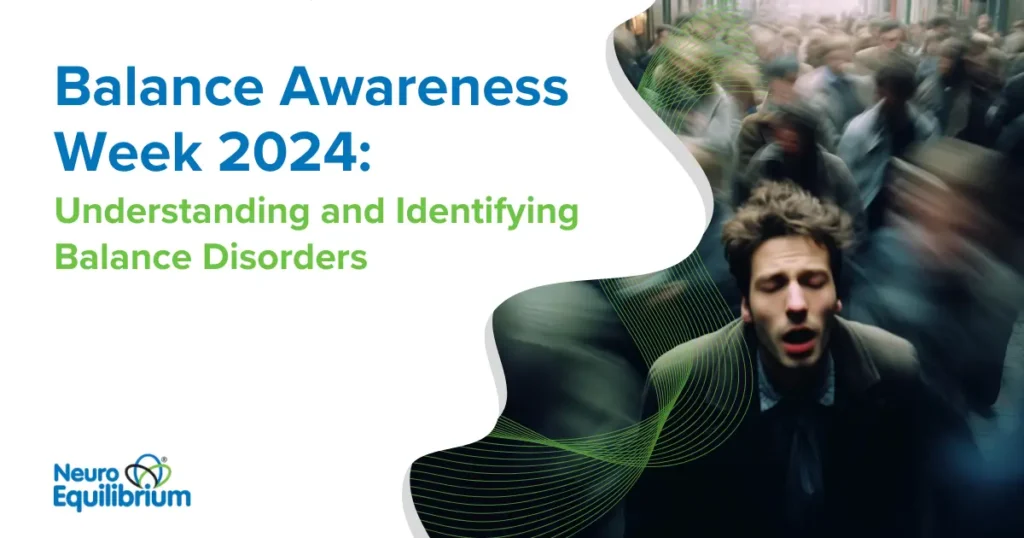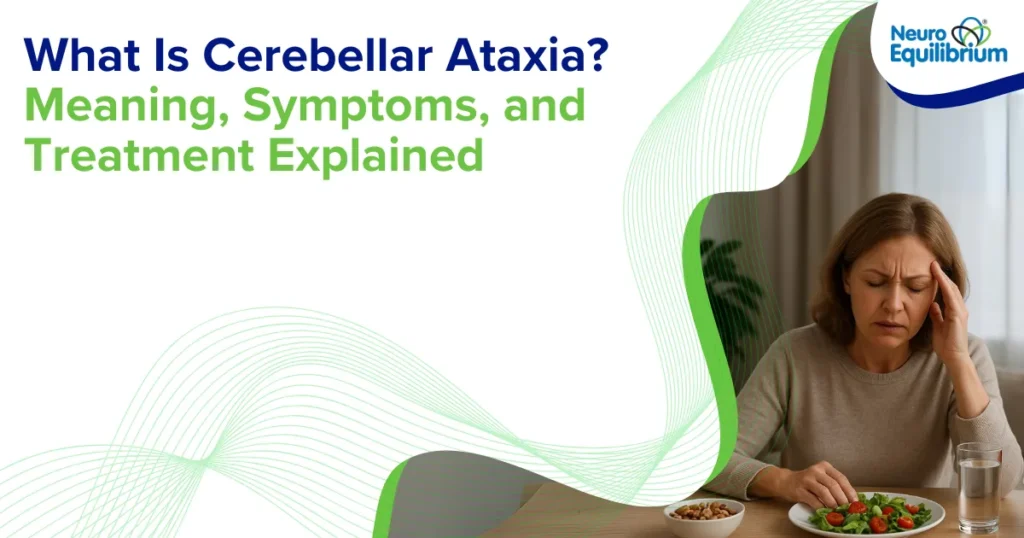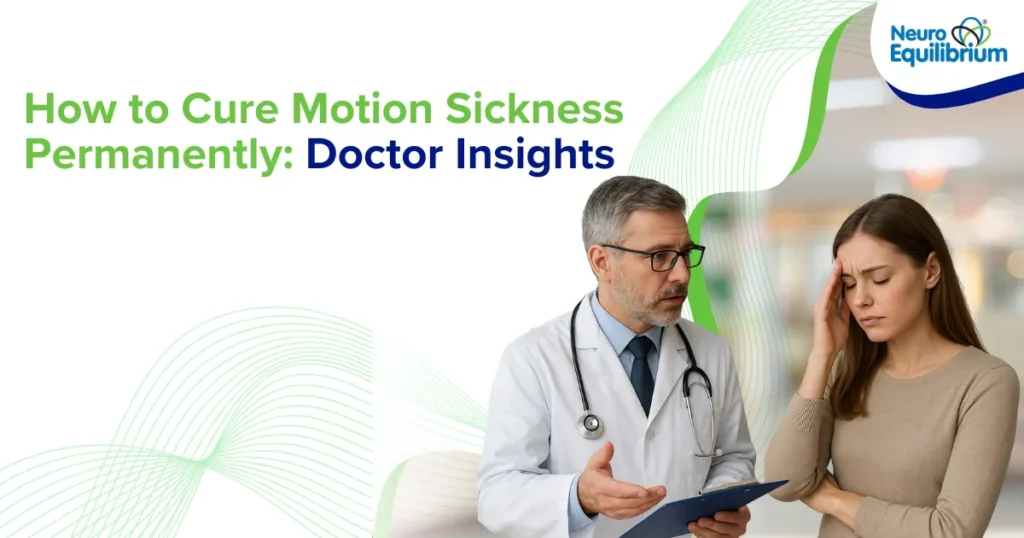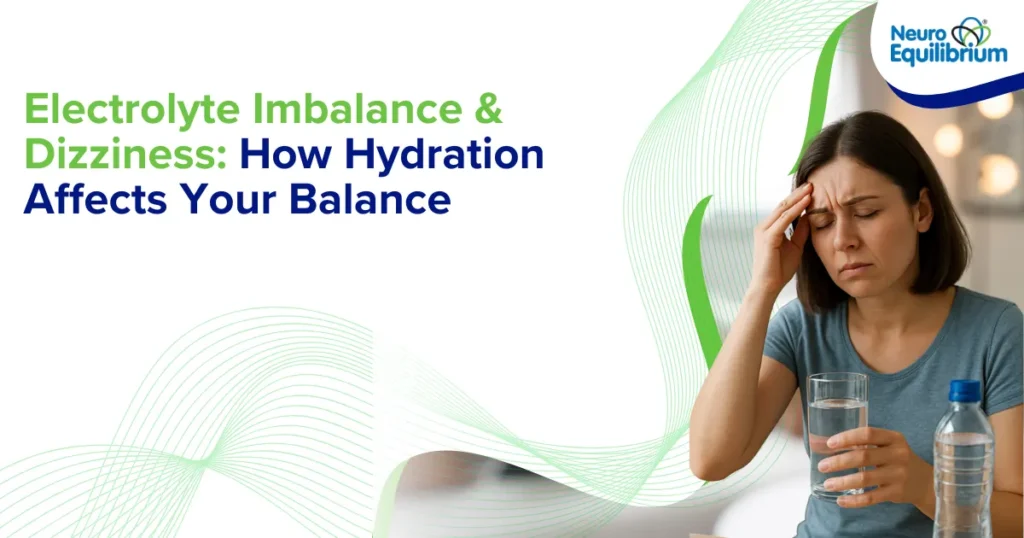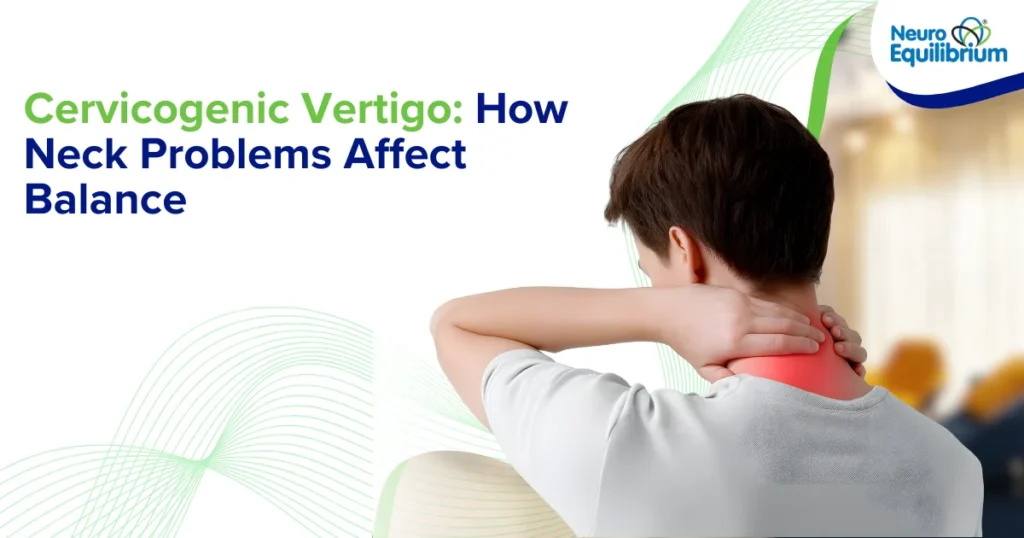Balance Awareness Week 2024 is a crucial reminder of the importance of our body’s equilibrium. The week, which is observed annually, highlights the significance of early detection in balance disorders, a group of conditions that affect millions worldwide. Recent statistics indicate that balance issues are more prevalent than commonly believed, with a substantial portion of the adult population experiencing symptoms at some point in their lives.
Understanding Balance and the Vestibular System
Our ability to maintain balance is a complex process involving multiple body systems. At the core of this process is the vestibular labyrinth, located in the inner ear. This intricate system works in tandem with our eyes along with joints and muscles, to keep us stable and oriented.
The vestibular system detects movement and position of the head. These signals are sent to the brain to maintain balance and spatial orientation.
These dizziness and balance problems are due to 40 diseases of the inner ear, or brain.
Early Signs of Balance Disorders: What to Watch For
Balance disorders can be subtle at first, often disguising themselves as mere clumsiness or fatigue. However, recognising these early signs can lead to timely intervention and better outcomes.
Signs to Recognise For Yourself
1. Dizziness or Vertigo
Dizziness is often described as a lightheaded, floating sensation, while vertigo feels like the room is spinning around you. If you experience these sensations especially when changing positions or standing up, it could be an early sign of one of the forty different vertigo, dizziness and balance disorders.
2. Unsteadiness or Difficulty Walking
If you find yourself unsteady while walking or needing to hold onto walls or furniture for support, this could indicate a balance issue. You might also notice difficulty walking in a straight line or feeling like you’re going to fall, even on level ground.
3. Blurred Vision or Eye Movement Issues
Balance disorders can lead to blurred vision, difficulty focusing, or involuntary eye movements (nystagmus).The balance system helps to keep your vision clear during head movements. This is why vestibular disorders can lead to blurred vision.
4. Nausea or Motion Sickness
Feeling queasy, especially when in motion or after changing positions, can be a sign of a vestibular problem. This might manifest as increased sensitivity to motion, such as feeling ill in cars or boats when you previously had no issues.
5. Cognitive Effects
Balance disorders can surprisingly affect your cognitive functions. You might experience confusion, difficulty concentrating and multi-tasking, or memory problems. These cognitive effects are often overlooked but can be significant indicators of balance issues.
Signs to Observe in Loved Ones
1. Observable Changes in Gait or Posture
Watch for changes in how one walks or stands. They might lean to one side, take shorter steps, or walk with their feet wider apart than usual. These changes often develop gradually, so comparing current behaviour to how they moved a few months ago can be revealing.
2. Increased Clumsiness or Frequent Falls
If you notice your loved one bumping into furniture more often or having frequent near falls, it could be a sign of balance problems. They might laugh it off as clumsiness, but recurring incidents warrant attention.
3. Complaining of Dizziness or Disorientation
If someone often mentions feeling dizzy, lightheaded, or “not quite right,” it’s important to take note. They might describe these sensations as feeling like they’re on a boat or that the room is tilting. Such symptoms can indicate potential balance disorders or other health concerns that may require medical attention to diagnose and treat appropriately, ensuring their safety and well-being.
4. Reluctance to Engage in Physical Activities
If someone who was previously active starts avoiding physical activities or seems anxious about moving around, it could be due to balance issues. They might make excuses to avoid going for walks or participating in sports they once enjoyed.
5. Changes in Behaviour or Mood Related to Movement
Balance disorders can lead to anxiety or irritability, especially in situations that challenge balance. Your loved one might become unusually nervous about navigating stairs, crowds, or uneven surfaces. They might also show signs of depression or social withdrawal due to their symptoms.
Risk Factors for Balance Disorders
While balance disorders can affect all age groups, certain factors can increase the risk of developing these conditions. Understanding these risk factors can help in early identification and prevention of balance issues. Let’s explore these factors in detail:
Age-related Factors
As we age, our body’s balance system naturally undergoes changes that can increase the risk of balance disorders:
- Deterioration of inner ear structures: The hair cells in our inner ear, crucial for balance, gradually decrease in number and effectiveness as we age.
- Decreased muscle strength and flexibility can impact our balance and our ability to recover from falls.
- Decreased vision: Age-related eye conditions can impact depth perception and spatial awareness, contributing to balance issues.
- Slowed reaction times: This can make it more difficult to respond quickly to changes in balance.
This does not mean that all balance disorders in the elderly are due to age. In fact, most older adults with balance issues can be helped to strengthen their balance control with customised rehabilitation.
Medical Conditions
Various medical conditions can significantly increase the risk of balance disorders:
- Ear infections: Infections in the inner ear can disrupt the vestibular system, leading to vertigo and balance issues.
- Stroke: A stroke can impact the regions of the brain that control balance and coordination.
- Multiple sclerosis: This condition can damage nerve pathways involved in maintaining balance.
- Parkinson’s disease: It affects movement control and can lead to balance problems.
- Diabetes: Can cause nerve damage (neuropathy) that affects balance and spatial awareness.
- Meniere’s disease: This inner ear disorder can cause severe vertigo and balance issues.
- Vitamin D Deficiency is known to increase the risk of osteoporosis making the bones weak. This deficiency can also predispose to BPPV leading to dislodged crystals by affecting the calcium metabolism of the body.
Medications That May Affect Balance
Certain medications can have side effects that impact balance:
- Antidepressants: Some can cause dizziness or affect coordination.
- Blood pressure medications: May lead to lightheadedness, especially when standing up quickly. Orthostatic hypotension is a condition where standing up from the lying down position results in a rapid fall of BP. This condition can result in lightheadedness or even blackouts.
- Sedatives and tranquillizers: Can cause drowsiness and affect balance even after waking.
- Some antibiotics: Particularly those that are ototoxic (damaging to the ear) like amikacin and streptomycin.
- Anti-seizure medications: Can affect coordination and focussing. .
Note: Never stop or change your medication without consulting your doctor. If you suspect your medication is affecting your balance, discuss this with your healthcare provider.
Lifestyle Factors
Our daily habits and lifestyle choices can have a major effect on our overall balance:
- Sedentary behaviour: Lack of physical activity can weaken muscles and affect coordination, increasing the risk of balance problems.
- Poor diet: Nutritional deficiencies, particularly vitamin D and B12, can contribute to balance issues.
- Excessive alcohol consumption: Can affect the inner ear and brain, leading to both short-term and long-term balance problems.
- Smoking: Can reduce blood flow to the inner ear and increase the risk of balance disorders.
- Obesity: Excess weight can put strain on joints and affect overall balance and mobility.
Simple At-Home Tests to Assess Balance
While professional evaluations from a healthcare provider are essential for diagnosing balance issues, these simple at home tests can offer helpful preliminary insights into your balance and stability. It’s important to perform these tests safely, preferably with someone nearby for support in case you feel unsteady.
The Romberg Test
The Romberg test is a classic method to evaluate balance. Here’s how to perform it:
- Steps:
- Stand with your feet together, arms at your sides.
- Close your eyes and maintain your balance.
- Steps:
- What it reveals: Difficulty maintaining balance with eyes closed may indicate issues with the vestibular system or proprioception (your body’s sense of position).
Timed Up and Go (TUG) Test
This test measures your ability to move from a seated position to walking and returning to a seated position.
- Steps:
- Sit in a chair with armrests.
- Stand up from the chair and walk 10 feet (3 meters) ahead.
- Turn around, walk back to the chair, and sit down.
- Time yourself – healthy adults should complete the test within 12 seconds.
- Steps:
- What it reveals: The TUG test assesses mobility, balance, and functional independence. Taking longer than expected might indicate a risk of falling or difficulty with daily activities.
When and How to Perform These Tests Safely
Perform these balance tests in a safe, clear space where there are no obstacles, and ensure you have something sturdy to hold onto, like a countertop or a friend’s hand, if you feel unsteady. It’s best to:
- Do these tests when you are well rested and not feeling dizzy or fatigued.
- Have someone present to supervise, especially if you have a history of falls or balance problems.
If any of these tests are challenging or cause concern, perform the vertigo profile test and consult with a healthcare professional for further assessment. These tests are not a substitute for a full medical evaluation but can provide useful insights into your balanced health.
When to Seek Medical Attention for Balance Disorders
While occasional dizziness or imbalance can be a normal response to changes in environment or posture, persistent or severe balance issues should not be ignored.
Severe or Prolonged Symptoms
Balance disorders that persist for an extended period or worsen over time may indicate a more serious underlying issue. Symptoms to watch out for include:
- Chronic dizziness: Feeling lightheaded or dizzy for hours or days.
- Frequent falls: Losing balance to the point of falling more often than usual.
- Severe unsteadiness: Feeling as if you’re about to fall even when standing still or sitting.
- Persistent vertigo: A sensation that you or your surroundings are spinning, lasting for prolonged periods.
These symptoms could suggest problems with your inner ear, neurological system, or even cardiovascular health.
How about we add a Vertigo Diagnostic Test header here:
Accurate diagnosis is essential to differentiate between the 40 potential ear or brain conditions causing vertigo. Here are three key tests used for proper diagnosis:
- Videonystagmography (VNG): Measures eye movements to detect inner ear and balance issues.
- Dynamic Visual Acuity (DVA): Assesses vision stability while the head moves to check for vestibular disorders.
- Subjective Visual Vertical (SVV): Evaluates a person’s perception of vertical alignment, helping identify balance disorders.
These tests are crucial for distinguishing the specific cause of vertigo.
Significant Impact on Daily Activities
If balance issues are interfering with your ability to carry out daily tasks, such as walking, climbing stairs, or even simple activities like standing up from a chair, it’s essential to seek medical advice. Examples include:
- Difficulty walking: Struggling to walk without assistance or feeling unsteady when moving around.
- Impaired coordination: Trouble with tasks that require balance, such as bending over, picking up objects, or maintaining posture while working.
- Fear of falling: If balance problems are causing anxiety or making you hesitant to engage in normal activities, this could reduce your quality of life and independence.
Ignoring balance issues can lead to accidents or long term restrictions on your lifestyle, so timely intervention through early diagnosis is important.
Accompanying Symptoms That May Indicate Serious Conditions
Balance disorders may sometimes be accompanied by other symptoms that suggest a more severe medical condition requiring immediate attention, such as:
- Sudden hearing loss or ringing in the ears (tinnitus): This could indicate a problem with the inner ear or conditions like Ménière’s disease.
- Double vision or blurred vision: May point to neurological issues such as stroke or multiple sclerosis.
- Numbness or weakness in the limbs: This could indicate a stroke, nerve damage, or other serious conditions affecting the nervous system.
- Chest pain or shortness of breath: May suggest cardiovascular issues that could be related to reduced blood flow to the brain, leading to dizziness or fainting.
- Confusion, difficulty speaking, or severe headaches: These can be signs of a stroke or transient ischemic attack (TIA), which require urgent medical attention.
Treatment Options Overview for Balance Disorders
There are various treatments available, depending on the cause and severity of the balance disorder.
Medical Treatments
The treatment of the balance disorder will depend on the underlying cause or etiology. A detailed history to understand the onset and progress of dizziness over time, other associated symptoms like hearing loss, headaches, falls etc. followed by Vestibular evaluation to check balance system function would give an indication to the diagnosis. The final diagnosis would decide the treatment planning.
There is no single treatment for Balance disorders. Vertigo suppressing medicines like meclizine or procloperazine can be used as emergency medicines in case of acute vertigo episodes. But these kinds of medicines should not be used for more than 5 days at a stretch.Treatment of the underlying disease would give lasting relief to the patient.
Vestibular Rehabilitation Therapy (VRT)
Vestibular Rehabilitation Therapy (VRT) is a specialized physical therapy designed to retrain the brain, enhancing coordination between the eyes, ears, and muscles. This therapy helps reduce dizziness and improve balance by addressing the underlying issues affecting sensory and motor functions. Through targeted exercises and techniques, VRT aims to restore normal movement patterns and alleviate symptoms of dizziness and imbalance
Lifestyle Modifications:
- Stay active: Engage in balance-focused exercises like yoga or tai chi to improve coordination and stability.
- Maintain a healthy diet: Ensure proper intake of essential nutrients, especially vitamins D and B12.
- Regular check-ups: Manage underlying health conditions with routine medical appointments and proactive care.
- Medication review: Regularly consult your doctor to ensure medications aren’t affecting your balance unnecessarily.
- Limit alcohol and quit smoking: These changes can improve both overall health and balance.
Conclusion
As we observe Balance Awareness Week 2024, it’s important to reflect on the vital role that balance plays in our everyday lives. Balance disorders often go unnoticed until they start to severely impact day to day activities, which is why early detection and proactive health management are key.
By recognizing the signs of imbalance early on whether it’s occasional dizziness, unsteadiness, or frequent falls we can prevent more serious complications down the line. It’s important to seek a comprehensive diagnostic evaluation from a specialised clinic like NeuroEquilibrium, which offers targeted testing for vertigo, dizziness, and balance disorders. This professional assessment can provide clarity on your condition and guide effective treatment options.
Taking these proactive steps can profoundly impact your overall quality of life. Remember, the earlier you act, the better your chances of maintaining a strong and stable foundation for your future.
FAQs for Balance Awareness Week 2024: Understanding and Identifying Balance Disorders
1. What are the most common signs of balance disorders?
Common signs of balance disorders include dizziness or vertigo, unsteadiness or difficulty walking, blurred vision or eye movement issues, nausea or motion sickness, and cognitive effects like confusion. Dizziness often feels like a floating sensation, while vertigo involves a spinning sensation. Difficulty maintaining balance while walking or standing, visual disturbances such as blurred vision, and feelings of nausea, especially in motion, are key indicators. Identifying these early signs can lead to prompt medical evaluation and treatment.
Book a consultation at your nearest NeuroEquilibrium Clinic today.
2. How can balance disorders affect daily life?
Balance disorders can significantly impact daily life by causing difficulty in performing routine activities. Individuals may struggle with walking, climbing stairs, or maintaining posture while standing. Balance issues can lead to frequent falls or near-falls, which increases the risk of injury. The fear of falling might cause individuals to avoid physical activities or social interactions, leading to a decrease in quality of life and independence. Balance problems can also result in increased anxiety, irritability, and even depression, as individuals may feel limited in their daily functions and activities.
Book a consultation at your nearest NeuroEquilibrium Clinic today.
3. When should I seek medical attention for balance problems?
Medical attention should be sought if you experience severe or prolonged symptoms of balance disorders, such as persistent dizziness, frequent falls, or severe unsteadiness. If balance issues interfere with your ability to perform daily tasks or if you notice additional symptoms like sudden hearing loss, blurred vision, or numbness, it’s crucial to get a comprehensive Vertigo, Dizziness and Balance Disorder Test. These symptoms may indicate more serious underlying conditions requiring prompt intervention. Regular check-ups and consultations with a specialist can help manage symptoms effectively and prevent further complications related to balance disorders.
Book a consultation at your nearest NeuroEquilibrium Clinic today.
4.What are some easy balance tests you can do at home?
Several at-home tests can help assess balance, such as the Romberg Test and Timed Up and Go (TUG) Test. The Romberg Test involves standing with feet together and eyes closed to see if you can maintain balance. The TUG Test measures how quickly you can rise from a seated position, walk 10 feet, and sit back down. Performing these tests in a safe environment can provide preliminary insights into balance and stability, but professional evaluation is essential for accurate diagnosis.
Book a consultation at your nearest NeuroEquilibrium Clinic today.
5. What treatment options are available for balance disorders?
Treatment options for balance disorders depend on the underlying cause and severity of the condition. Medications, such as antivertigo drugs or diuretics, can help manage symptoms. Vestibular Rehabilitation Therapy (VRT) is a specialized physical therapy designed to improve coordination and reduce dizziness. A comprehensive approach that combines medical treatments, therapy, and lifestyle changes is often most effective in managing balance disorders. Lifestyle modifications, including dietary changes, regular exercise, and home safety adjustments, can enhance balance and prevent falls.
Book a consultation at your nearest NeuroEquilibrium Clinic today.






